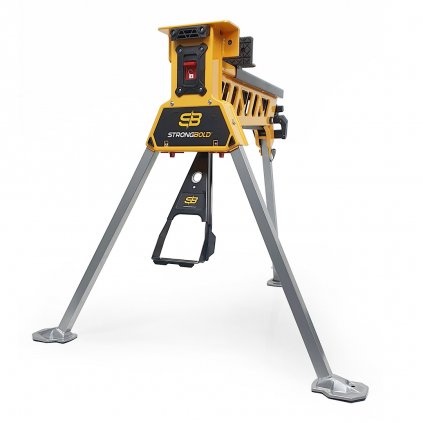Japanese Double-Sided Sharpening Stone SK11 - Grit 150 and 1000
Code: 4749Related products
Product detailed description

Japanese water sharpening stones are known for their top-notch sharpening performance. The abrasive particles are quickly washed away by water, revealing new, sharp crystals and thus always providing a premium surface for sharpening any blade. During sharpening, a so-called "slurry" is formed, which can also be created with the help of "Nagura" stones. This slurry increases the efficiency of the sharpening process. Japanese water stones should only be lubricated with water, never use oil. These stones can be soaked in water to increase the sharpening performance, but never leave them in water for a long time, as this can affect the bond of the crystals and lead to cracking.
Features of the sharpening stone:
✅ Dual grit JIS: #150 and #1000
✅ Double-sided water stone
✅ For dull blades (#150) and regular sharpening (#1000)
✅ Stand included in the package
✅ Made in Japan
Which grit to choose?
For sharpening really dull or uneven blades, use stones with a low JIS number (Japanese classification for grit). The lower the number, the coarser the stone. Stones with a high JIS number are intended for final and fine sharpening or smoothing.

- #120 to #600 JIS: for dull and uneven blades
- #700 to #2000 JIS: for normal sharpening
- #3000 to #5000 JIS: for fine sharpening of quality blades
- #6000+ JIS: extremely fine stones for smoothing or removing scratches
How to sharpen with water stones
 For proper sharpening with a Japanese water stone, it is advisable to prepare (besides the knife and stone) also a towel and a container with water (e.g., plastic). Soak the water stone in the container for about 10 minutes, so the stone sufficiently absorbs water. Then place the stone on a towel, hold the knife in your dominant hand with the blade facing you and start sharpening.
For proper sharpening with a Japanese water stone, it is advisable to prepare (besides the knife and stone) also a towel and a container with water (e.g., plastic). Soak the water stone in the container for about 10 minutes, so the stone sufficiently absorbs water. Then place the stone on a towel, hold the knife in your dominant hand with the blade facing you and start sharpening.
The knife should lie on the stone in a horizontal position at about a 45° angle widthways, and the blade itself should rest on the stone's surface at an angle of 15 to 20°. The index finger of the hand holding the handle should rest on the back of the blade, and three fingers of the other hand should be placed on the side of the blade. Be careful not to injure yourself while handling.
With this grip, move the blade evenly across the entire surface of the stone about 30 times. A liquid similar to slurry will start to form on the surface of the stone - do not wipe this liquid away during intermediate sharpening, as it increases the efficiency of the sharpening process. If the stone starts to dry out during sharpening, reapply a small amount of water.
Repeat the process several times so that the entire blade is evenly sharpened. After sharpening, wash the knife and stone with water, dry with a towel, and store in a dry place.
Additional parameters
| Category: | Double-sided |
|---|---|
| EAN: | 4977292157032 |
| JIS Grit: | 150, 1000 |
| Type: | Water |
| Length: | 175 mm |
| Width: | 55 mm |
| Height: | 25 mm |
| Stand included in the package: | Yes |
| Weight: | 600 g |
| Made in: | Japan |
| Quantity in package:1: |











